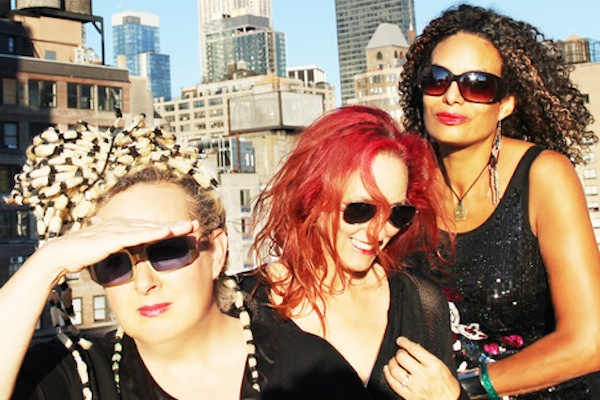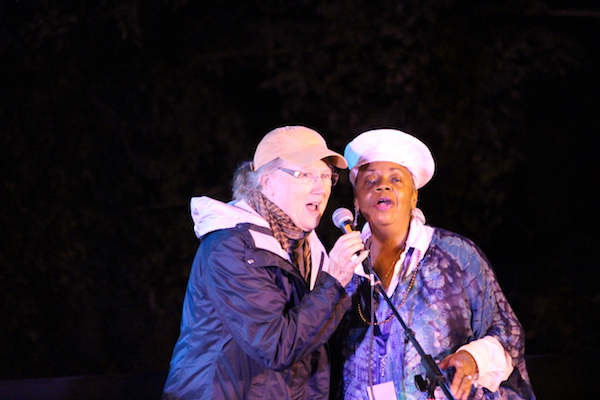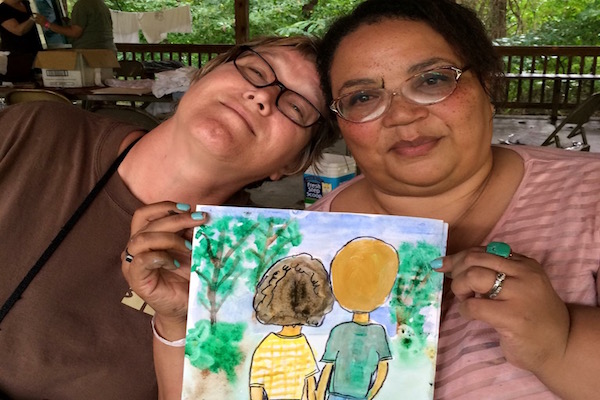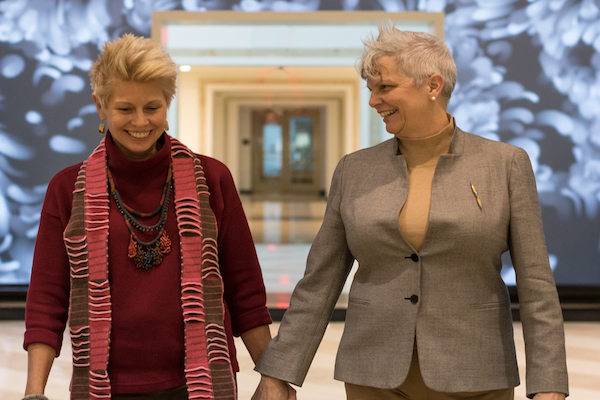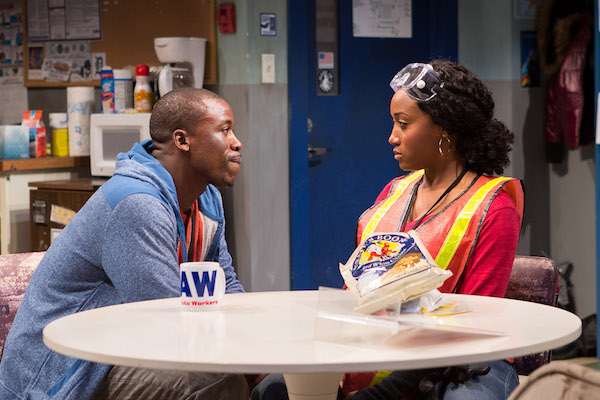by Athena Naylor
This article was first published in The DC Line.
The Washington Revels’ annual holiday production returns to Lisner Auditorium this weekend to welcome Yule with a romping production of Elizabethan music and dance that celebrates the group’s 35 years in the District.
The latest version of The Christmas Revels invites viewers to Elizabethan England to follow the exploits of professional fool Will Kemp, a comic actor who historically served in Shakespeare’s theater company and famously Morris danced from London to Norwich in a nine-day publicity stunt. The 2018 production, which debuted last weekend, imagines a scenario in which Kemp (played by Mark Jaster) arrives in Norwich at the same time as her majesty Queen Elizabeth I (played by Katrina Van Duyn), who has come to enjoy rustic entertainment and celebrate Christmas away from the trappings of court.
The Christmas Revels is a yearly seasonal celebration showcasing traditional folk dances, the art of pantomime, music and participatory theater for all ages. Revels Inc., under which Revels groups across the country are affiliated, was founded in 1971 in Boston, but the phenomenon soon spread — first to New Hampshire in 1975, and most recently to Santa Barbara, Calif., its 10th location, in 2007. DC’s production group launched in the early 1980s and annually hosts a variety of participatory events such as Community Sings, summer parades, May Revels and, of course, its largest event — The Christmas Revels, which each year focuses on a different time period and folk tradition.
As a historical variety show, the 2018 production excels. Upon entering the theater, each audience member receives a program that not only provides sheet music for the eight singalongs included in the production, but also features a veritable history lesson on English folk culture. The program offers a concise but thorough explanation of the cultural origin and purpose of each song and dance performed on stage.
Within the show, musical performances are heightened by the accompaniment of Piffaro: The Renaissance Band, which imbues the production with sounds of the time, showcasing beautiful medieval and Elizabethan instruments, from horns and recorders to giant lutes.
The size and spectacle of The Christmas Revels is part of its public appeal, and the production company boasts an extensive cast that includes players from “age 8 to 88.” Accolades must go to artistic director Roberta Gasbarre and the Revels costume shop for making period costumes for a cast of nearly 100 people. The large and varied cast is indeed a feat and a highlight of the show. The children players are particularly charming in their period-specific song and pantomime numbers.
However, occasionally the sheer size of the Revels cast works against the production’s visual definition. The large folk dances, in particular, lose focus due to the significant number of performers cluttering the Lisner stage. The number of players in the production works best in one of the comedic highlights of the show, when each villager of Norwich, in an attempt at theatrical acting, cries out a line of a Shakespearean tragedy before dramatically perishing, resulting in the absurd and hilarious staged mass death.
When the production provides space for less crowded scenes, individual players within the production are allowed to shine. A purple-lit nighttime scene in the beginning of Act 2 opens with the Abbots Bromley Horn Dance, an ancient ritual whose meaning has been forgotten but whose impact remains engaging and mysterious. Dancers adorned with antlers and accompanied by a traditional recorder weave around the stage, creating a dreamlike atmosphere that serves as a respite to the more raucous rustic entertainment that fills the rest of the show.
Soon, Kemp — adorned with a donkey’s head from his rehearsals with the village players for their Yule play — encounters Queen Elizabeth sleeping outdoors in her nightgown. With his identity disguised, Kemp promenades with the queen in a comedic scene that makes full use of Jaster’s training in pantomime.
The sequence pays homage to A Midsummer’s Night Dream and the Shakespearean motif of strange and fantastical encounters occurring at night in the woods. When Kemp and the queen recognize each other the next morning in the village, both visibly decide to say nothing of the experience. What happens in the woods stays in the woods.
The Christmas Revels delivers what it sells as a revival and celebration of Elizabethan and Yuletide cultural traditions. If there is any reservation attached to the show, it would be toward how well these traditions translate to the current day. For example, in the second act of the show Queen Elizabeth delivers a monologue about the joy of the holiday season with the promise that “the gloom of the world is just a shadow.” This speech fits the historical purpose of Yule as a solstice celebration that marked the end of days growing shorter and the beginning of increasing daylight. However, the reaction to this line, which was clearly meant to engender hope, was rather subdued at the Saturday matinee on Dec. 8. Perhaps having a monarch assure the poorer working class that their struggles are “just a shadow” falls a little flat after a rather tumultuous year, especially for a politically minded Washington audience.
The crowd reserved its cheers and applause for other moments, such as when the all-female troupe of the Rock Creek Morris Women gave Kemp a run for his money in a Morris dance duel. Raucous laughter also followed jokes about Canadian and American health care during the amusing play-within-a-play sequence in Act 2. It is 2018, after all, and there is benefit to focusing on the “expansion” aspect of the Revels’ mission to “revive, sustain, expand, and celebrate cultural traditions.”
Any recommendation to see The Christmas Revels should come with a caveat — you must enjoy participatory theater and be receptive to singing along with large groups. To say the experience is for everyone would be presumptuous. But for those looking for a family-friendly alternative to more standard holiday outings such as The Nutcracker or A Christmas Carol, The Christmas Revelsis a festive way not only to welcome Yule, but also to learn about unique historical traditions and gain a better appreciation for DC’s local performers and varied, thriving community ensembles.
To purchase tickets for The Christmas Revels: An Elizabethan Celebration of the Winter Solstice, visit the Washington Revels website. Performances are Friday at 7:30 p.m. (Family Friday); Saturday at 2 and 7:30 p.m.; and Sunday at 1 and 5 p.m. Tickets cost $18 to $60 for adults and $12 to $40 for ages 18 and younger. George Washington University’s Lisner Auditorium is located at 730 21st St. NW.



